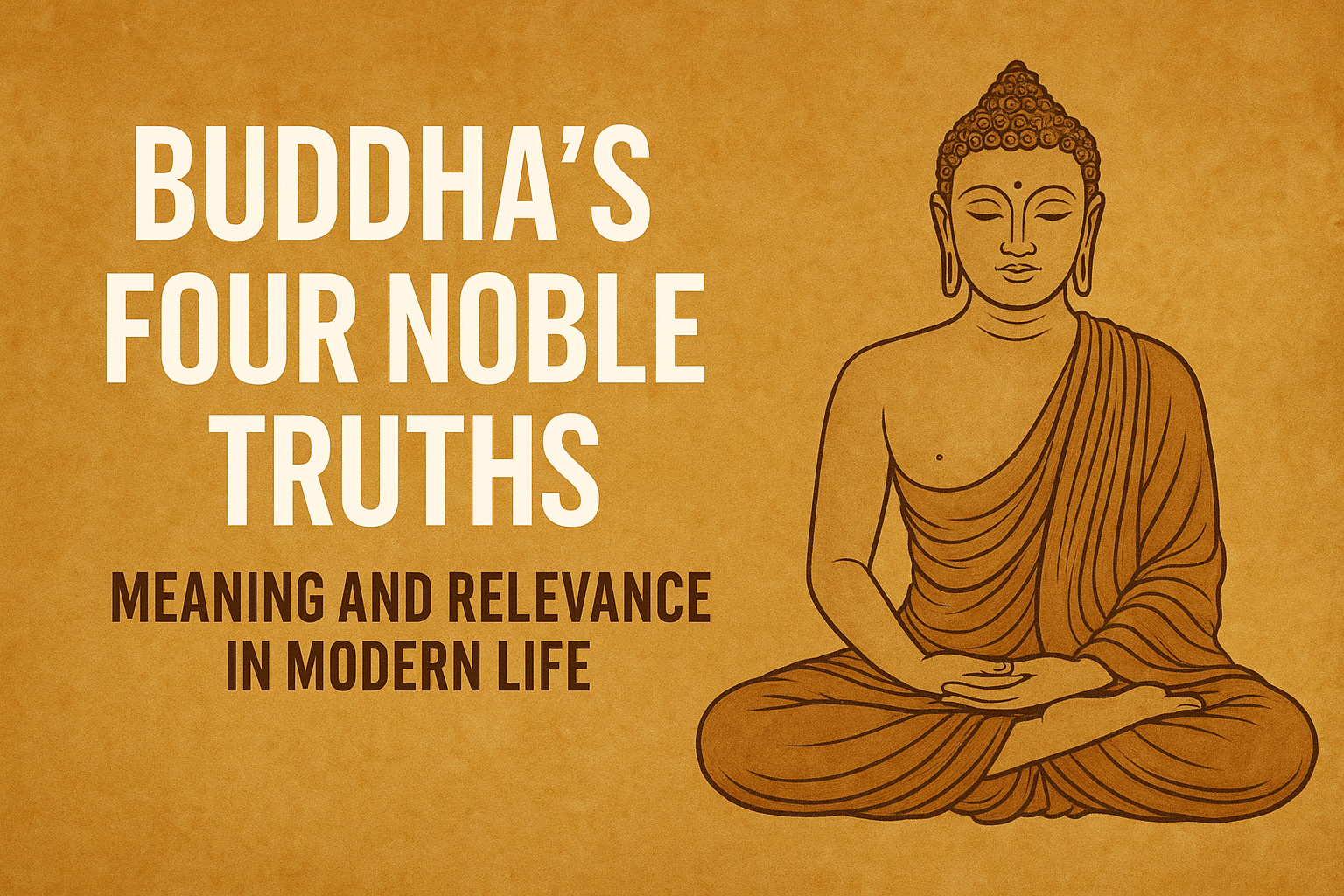Introduction
More than 2,500 years ago, Siddhartha Gautama—known as the Buddha—offered a profound framework for understanding human suffering and finding a path toward liberation. At the heart of his teachings are the Four Noble Truths (Arya Satya), which form the foundation of Buddhism. Far from being abstract religious doctrine, these truths are deeply practical insights into the challenges of human life. Today, in an era marked by stress, consumerism, and constant change, the Four Noble Truths remain strikingly relevant.
The Four Noble Truths Explained
1. Dukkha – The Truth of Suffering
Buddha observed that life is inseparable from suffering. “Dukkha” does not mean pain alone; it also refers to dissatisfaction, impermanence, and the subtle unease of never being fully content. Birth, aging, illness, death, and even moments of joy—because they are fleeting—are tinged with dukkha.
Modern relevance:
In our time, stress, anxiety, climate uncertainty, and the pursuit of endless consumption mirror this truth. Acknowledging that dissatisfaction exists is the first step toward addressing it. Mental health discourse today echoes this—awareness precedes healing.
2. Samudaya – The Truth of the Cause of Suffering
Buddha taught that the root of suffering is craving (tanha) and attachment—our relentless desire for pleasure, possessions, recognition, or permanence. Ignorance (avidya) about the impermanent nature of life fuels this cycle.
Modern relevance:
The consumer-driven global economy thrives on constant craving—new gadgets, bigger houses, social media validation. This endless cycle of “wanting more” often leaves individuals restless and unfulfilled. Understanding this truth helps us see how desire traps us in a loop of dissatisfaction.
3. Nirodha – The Truth of the Cessation of Suffering
The Buddha assured that liberation from suffering is possible. By letting go of attachments and cravings, one can experience peace (nirvana)—a state beyond suffering, greed, hatred, and delusion.
Modern relevance:
In today’s fast-paced world, practices like mindfulness, meditation, and minimalism reflect this principle. Many studies highlight that contentment, gratitude, and conscious living reduce stress and enhance well-being. The possibility of inner peace is as real today as it was in ancient India.
4. Magga – The Truth of the Path to End Suffering
The way to end suffering is through the Noble Eightfold Path, a balanced approach covering right view, right intention, right speech, right action, right livelihood, right effort, right mindfulness, and right concentration.
Modern relevance:
The Eightfold Path resonates with contemporary values: ethical living (sustainability, responsible consumption), mental discipline (focus in a distracted world), and wisdom (critical thinking, empathy). It offers a roadmap not only for spiritual seekers but for anyone striving for a meaningful, harmonious life.
Why the Four Noble Truths Matter Today
- Mental Health & Well-being – Rising depression, anxiety, and burnout show the need for inner frameworks to understand suffering and respond with compassion.
- Sustainable Living – In an age of climate crisis, the idea of reducing craving and living mindfully aligns with sustainability goals.
- Social Harmony – Right speech and right action emphasize ethical communication and non-violence, crucial in polarised societies.
- Personal Growth – The path highlights discipline, mindfulness, and wisdom—qualities equally important for success in modern professional and personal life.
Conclusion
The Buddha’s Four Noble Truths are not confined to monasteries or scriptures—they are universal principles that continue to guide humanity. By recognizing suffering, understanding its cause, realizing its cessation, and walking the Eightfold Path, individuals and societies can cultivate peace, resilience, and genuine happiness.
In an uncertain 21st century, the Four Arya Satya remind us that while suffering is part of life, so too is the potential for liberation.

Leave a Reply